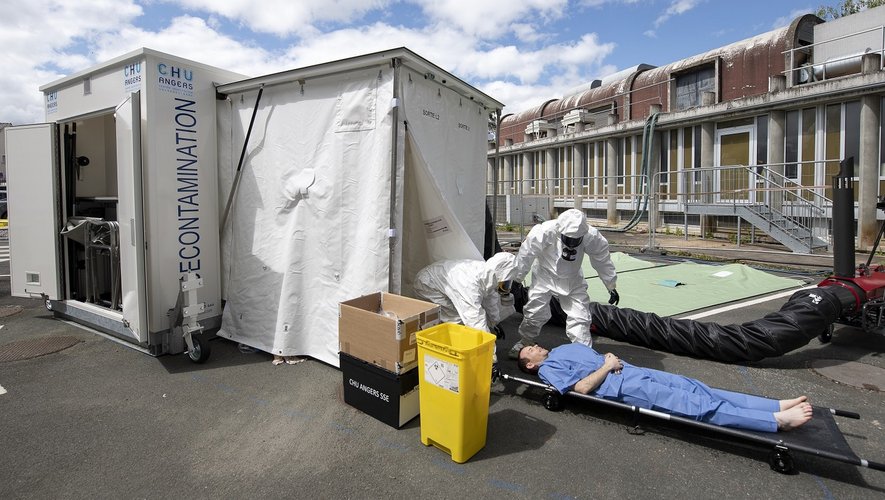In the event of exposure to chemical or even nuclear products, it is urgent to decontaminate the exposed persons… and to do so in complete safety. This is why the Angers University Hospital has acquired a new mobile device, operational in less than 30 minutes. Reporting.
Tokyo, 1995. A terrorist attack using sarin gas left 13 dead and more than 6,000 injured in the Japanese capital’s subway. Within 2 hours of the attack, more than 500 people infected with the neurotoxin presented themselves to the emergency room of Tokyo’s St Luke’s hospital. And this, even before the establishment of a decontamination chain! The consequences are then disastrous since the medical teams of the hospital are, in turn, contaminated en masse!
Act fast
A fortunately rare event which nevertheless reminds us of the importance of acting quickly and safely to avoid any risk of cross-contamination. Because the risks are sometimes closer than we imagine: an industrial accident in a Seveso-classified factory, students on a school trip exposed to phytosanitary products during a spraying, a chemical terrorist attack during a rally jock… “It is important to have a hospital decontamination unit available at all times“, explains Dr. Delphine Douillet, emergency physician at the University Hospital of Angers. Which establishment has a new device for victims of chemical, radiological or nuclear accidents. Its name: the DéconCube.
Ready in 30 minutes
7 meters by 4 for a height of 2m70. Operational in 30 minutes, the DeconCube can be assembled and disassembled at will. Goals : “decontaminate the victims as quickly as possible before they are treated in the care services and avoid any spread of contamination within the hospital and thus protect the caregivers and other patients“, specifies Dr Guillaume Bouhours, referent doctor Exceptional Health Situation at the CHU of Angers. He adds that the CHU already had a decontamination system, but “more complicated to set up“.
10 to 15 minutes of decontamination
The DeconCube, how does it work? As Damien Chauvat, from the Center for Teaching Emergency Care at the CHU, describes it, “this decontamination is divided into 4 phases. The first is to remove all personal effects such as jewelry, clothes that do not go through the head like jackets, pants… The remaining clothes like T-shirts are then cut to be removed more easily. Then comes the phase of the shower with soap. Follows the rinsing step. And finally that of dressing with disposable pajamas.”
Contaminated water is collected in two tanks, sort of large hermetic pockets of 3 cubic meters each, theIt’s time to know the origin of the contamination. “The use of the cube mobilizes eight decontaminators – equipped with gloves, mask, dry suit – who take turns every hour. Every hour, 25 people can be decontaminatedThis allows the CHU d’Angers to quickly carry out the first decontaminations while waiting for the reference unit for the Pays de la Loire based at the CHU de Nantes.
To note : In total, 90 hospital staff have been trained within the Angevin University Hospital in order to allow mobilization at any time.

